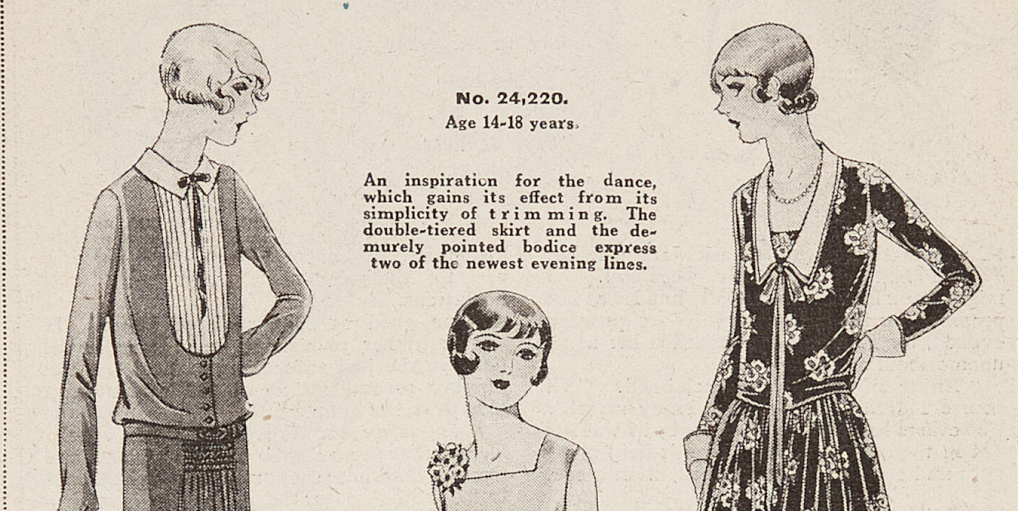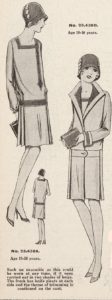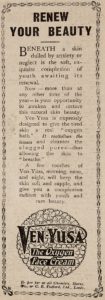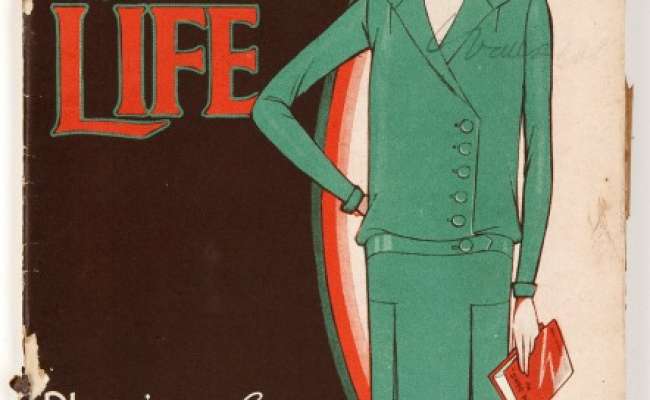
In the early twentieth century, the British magazine industry capitalised on female readers. It no longer exclusively targeted upper-class women, but also working-class and middle-class girls, and young working women in factories, mills and commerce (Tinkler 2013, 1).
Between 1918 and 1928, 25 new titles appeared (Greenfield 1998, 162). At the price of little more than one or two pennies a week these periodicals were affordable. Although they mostly focused on housekeeping and childcare, they were also a window to the outside world, combining “escapist pleasures and domestic responsibilities” (Hackney 2007, 21). These magazines present a complex relationship between text and image that shaped visions of femininity for readers (Greenway 2019, 13).
As you read, here are some questions to think about
- To what extent do you think these magazines reflected women’s choices and opinions?
- Who were these magazines intended for?
- What similarities and differences can you identify when you compare the 1919 and 1928 issues?
- To what extent are the ideas presented here similar or different to today?
- If you were to search for content similar to the one presented in the magazines, where would you look for it?
The “girl” in magazines

One innovation in periodical publishing was the introduction of the term ‘girl’, which referred to the unmarried adolescent but also to young working women. Teenage girls did not have much disposable income, but young female workers became the target of many magazine periodicals between 1920 to 1950 (Tinkler 2013, 4).
Looking closely at these magazines, you can learn a few things about their intended readers. First, consider the price and quality of the production: it is a weekly magazine, it shows many signs of use and is easy to carry, plus it costs just 2 pennies. What do you think this tells us? That they were in mass-circulation and aimed at lower middle-class women as they were quite cheap.
If you look inside, you can find additional clues, for example there are knitting and sewing patterns, which confirms the lower income of some readers, who would not have been able to afford the more expensive ready-made clothing (Greenfield 1998, 170).
Constructing girlhood
 Magazines such as Woman’s Life were known for combining romantic fiction, knitting patterns, housewifery hints for cookery, and later, also entertainment features and informative articles. The content also offers clues to the multi-layered experience of readers: a few stories construct images of female fantasies, often romantic, that may have fit with the desires for younger readers to take up new lifestyles and come into contact with a different world of information and ideas (Hackney 2007, 22).
Magazines such as Woman’s Life were known for combining romantic fiction, knitting patterns, housewifery hints for cookery, and later, also entertainment features and informative articles. The content also offers clues to the multi-layered experience of readers: a few stories construct images of female fantasies, often romantic, that may have fit with the desires for younger readers to take up new lifestyles and come into contact with a different world of information and ideas (Hackney 2007, 22).
But as you can see from these pages, the construction of the “girl” ultimately directs the reader to domestic and caring qualities associated with traditional femininity (Tinkler 2013, 6). There are cookery recipes, a knitting pattern for a boy’s suit, and even an article that questions the improvements in modern day women’s lives as they have gone into the workforce (“Have we really improved”, 1919)!
In the 1928 issue, girlhood is defined as “an awkward, untidy stage”, but fear not, for the article has the solution… you only need to dress with “neatness and simplicity”! Beauty advice like this was common, and another article recommends readers that to get “real foundation for skin beauty” you must avoid “delicious creamy pastries”, because “the possessor of a lovely skin will always be admired” (again, pointing you towards marriage…).
Some of these advertisements show the kind of products that women would have bought, and which were relatively inexpensive commodities. Ven Yusa, which was advertised for working women, alongside a product against eczema, are just some examples.
Check out other magazines in the collection
This page only gives you a taster of the range of magazines that a large cross-section of women read. Have a look at some of the other early magazines that we have in our collection by following the links below.



